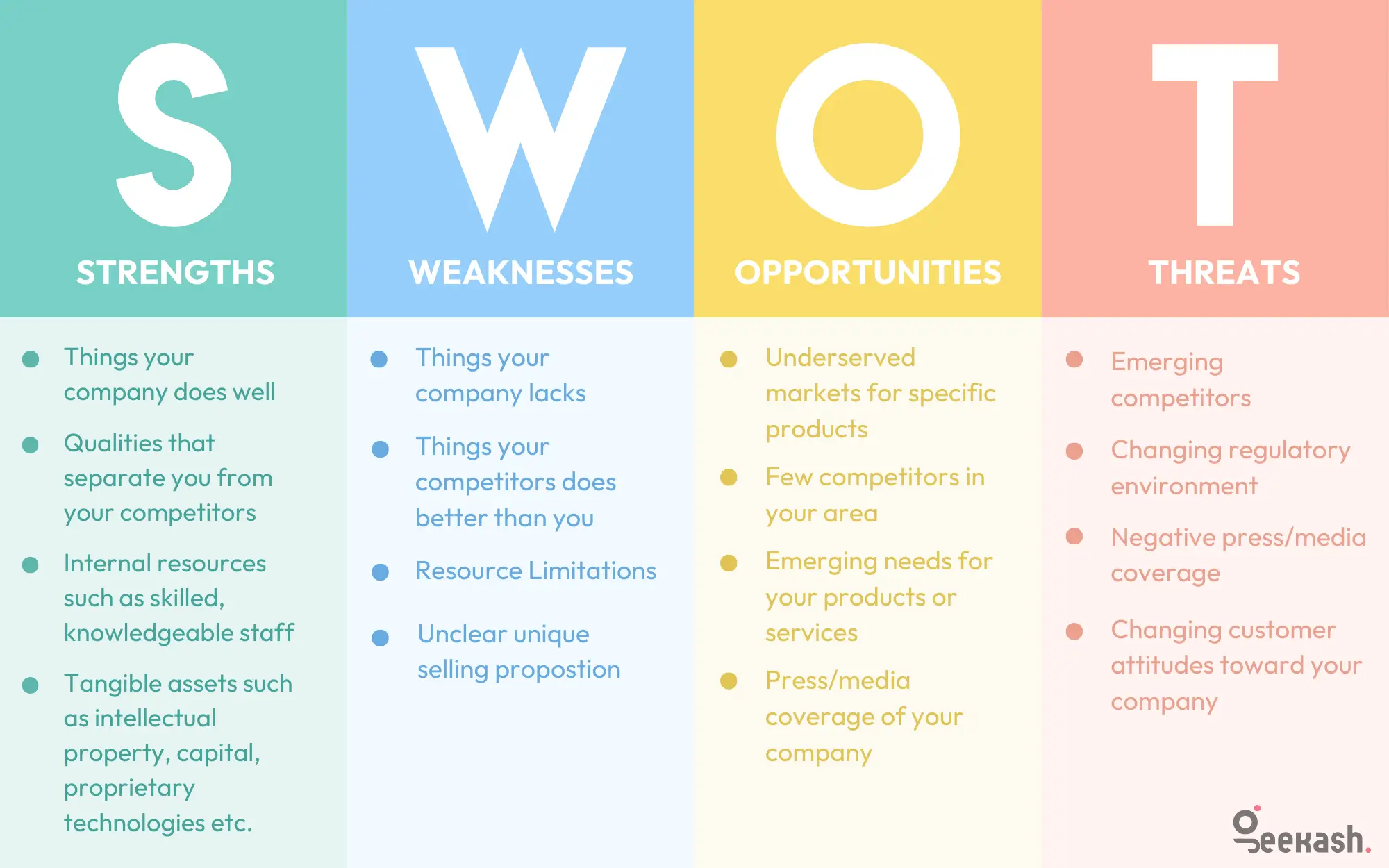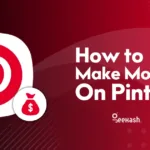Today, anybody can launch a small business; it’s thrilling but comes with its share of challenges.
47% of small business owners manage their marketing independently. The numbers become more striking – 66% invest less than $1,000 yearly in marketing, and 94% intend to increase their marketing budget in 2024.
These statistics reveal a clear picture: small business owners value marketing but face resource constraints and directional challenges. Most businesses struggle with time limitations, budget restrictions, and inadequate strategic planning.
A well-structured small business marketing plan is vital for achieving success in 2025. This piece guides you through creating an effective marketing plan that generates real results, whether you’re building from scratch or updating your current approach.
Your marketing strategy can shift from chaotic to systematic. Let’s look at our step-by-step guide and a free template to help you create a practical, results-driven marketing strategy.
What is a Small Business Marketing Plan
A marketing plan is a strategic document that outlines a business’s overall marketing strategy and specific actions for reaching marketing goals over a set period. It serves as a roadmap to help the business focus its marketing efforts, allocate resources efficiently, and measure progress toward its objectives.
A strategic roadmap forms the foundation of a small business marketing plan. This roadmap outlines specific actions to attract and retain customers. This focused approach allows Small businesses to make informed decisions about their marketing investments and resource allocation.
Key Components
Several essential elements work together to stimulate business growth in a successful small business marketing plan. We conducted a detailed target market analysis to understand the audience’s demographics, unique traits, and market size. More than that, your plan should highlight your competitive advantage through superior product quality, competitive pricing, or exceptional customer service.
Your marketing plan should include:
The plan should feature pricing and promotional tactics that align with your business objectives. This well-laid-out approach helps maintain consistency across marketing initiatives while supporting long-term business sustainability.
Why You Need One in 2025
The marketing landscape in 2025 brings unique challenges and opportunities that make a structured plan vital. AI-driven decision-making has become common, and your marketing plan must prioritize data quality and relevance instead of traditional advertising approaches.
Service-based businesses now need hyper-local SEO strategies. Your marketing plan should optimize local search data because AI agents heavily influence consumer decisions based on structured, high-quality information.
AI-driven search has made pricing and service descriptions crystal clear. Nearly 60% of small businesses use AI for marketing activities of all types. Your 2025 marketing plan should emphasize clear data presentation and service area definitions to boost visibility to AI-powered search systems.
A well-crafted small business marketing plan helps track campaign performance across multiple channels. Making use of information ensures your marketing efforts stay in sync with changing customer priorities while focusing on measurable outcomes.
You can achieve sustainable growth in a competitive market by tracking key performance indicators and adjusting strategies based on immediate data.
Getting Started with Your Marketing Plan
Your small business marketing plan needs a step-by-step approach to succeed. The path to success depends on three significant elements: your current position assessment, clear goals, and budget limits.
Assess your Current Situation

A complete SWOT analysis gives you a clear picture of your business’s market position. This strategic review looks at:
Look at your current marketing performance to spot what works and what needs fixing. This analysis helps you make smart decisions about your future marketing moves.
Set SMART Marketing Goals
SMART goals are the foundations of marketing that work. These objectives should be:
Specific: Clear targets that focus on exact outcomes instead of general wishes. For example, “Grow email list by 25%” works better than saying, “Increase brand awareness.”
Measurable: Your goals need numbers to track success. Use real figures and percentages to see your progress.
Achievable: Your objectives should match your resources and market reality. Past results can guide your future targets.
Relevant: Your goals should align with your business strategy and help you succeed long-term.
Time-bound: Deadlines create urgency and keep you focused.
Define your Budget Constraints
Small businesses usually put between 7% to 12% of their total revenue into marketing. All the same, this number changes based on your industry and how long you’ve been in business. B2C companies need bigger budgets than B2B companies, with B2C services putting about 11.8% of revenue into marketing.
New businesses need to plan their marketing budgets carefully. Here’s what first-time business owners should focus on:
B2C companies typically need to invest more in marketing than B2B businesses. New companies should spend more to build brand awareness first, then reduce spending once established in the market.
Note that tracking your marketing ROI helps you use resources wisely. This shows which strategies give you the best results and where you might need changes.
Understanding Your Target Market
Small business marketing success starts with knowing your customers and what they just need. We focused on building detailed customer profiles and did market research to guide our small business marketing plan.
Create Customer Profiles
A customer profile gives a complete view of your ideal customer and covers their traits, behaviors, and priorities. Research shows that 79% of customers share their data willingly when it results in customized experiences. Getting detailed information is vital to creating accurate profiles.
Your customer profile should include these simple components:
Demographic data helps target marketing channels, but psychographic information reveals what products your customers value. For instance, someone who travels often and follows a vegetarian diet might like plant-based, portable snacks marketed as cruelty-free.
Research Market Needs
Market research cuts risks and validates your business ideas. The process looks at existing sources and direct consumer feedback to understand what the market just needs.
Small businesses find direct research methods particularly valuable. Surveys, questionnaires, and focus groups help you get a nuanced picture of your target audience. Existing sources can show valuable industry trends and demographic information, saving time and resources.
Your market analysis should answer these key questions about your target market:
Your frontline employees share valuable insights about competition and customer reactions to products. This information helps you find ways to grow business with existing customers while bringing in new ones.
Learning about your market never stops. Smart business owners watch market conditions and adjust their strategies to stay profitable. This approach will give your small business marketing plan relevance and effectiveness.
Choosing Marketing Channels
Choosing the right marketing channels is crucial to your small business marketing plan. Recent studies show that 81% of marketers reach their audience through at least three channels. This highlights why you need a varied approach.
Digital Marketing Options
Digital marketing offers budget-friendly ways to connect with your target audience. The most successful digital strategies include:
Traditional Marketing Methods
Traditional marketing still packs a punch. Direct mail campaigns deliver impressive results – 61% of recipients say these messages shape their buying decisions. Local print advertising helps build your community presence. Event marketing proves highly effective, as 79% of U.S. businesses generate leads this way.
Selecting the Right Mix
Customer priorities vary, so combining online and offline channels often brings the best results. About 61% of consumers mix online and offline shopping. Your business should think over these factors when picking marketing channels:
Budget Allocation: Small businesses usually put 7-12% of revenue into marketing across channels.
Target Audience Behavior: Today’s numbers show that 66% of Gen Z finds local businesses through social media. This makes social platforms essential if you target younger demographics.
Local Market Focus: Nearly half of consumers (49%) shop locally because it’s convenient. Your channel mix should boost local visibility both online and offline.
Measurement Capabilities: Digital channels let you track results precisely, helping you optimize spending and attract more leads. Traditional methods build real brand experiences and reach people who might not be online much.
Track your channel performance regularly and adjust your strategy based on ground results. This data-driven approach will give your marketing efforts better results that align with your business goals.
Creating Your Content Strategy
Content marketing is a powerful way to deliver valuable materials to your target audience. The numbers speak for themselves – 41% of marketers call it their most effective tool.
Types of content that work
Your content strategy should cover various formats to attract and keep customers. Videos have become a game-changer, and 89% of consumers want brands to create more video content. The most successful content types include:
Blogs are the lifeblood of content marketing that establishes your business’s expert status. Video content creates experiences that people love, with 83% of consumers choosing to learn about brands through videos. Case studies build trust by showing real-life results.
Content Calendar Planning
A structured calendar is a vital part of organizing your content. It helps track what, when, and where you post. Good planning will give a steady stream of valuable content to your audience.
These posting schedules work best to optimize engagement:
Your content calendar needs important dates, campaigns, and recurring themes. Scheduling tools can help automate posts and keep your platforms consistent. Stay flexible enough to adjust your calendar based on what works and what your audience says.
Content batching – creating multiple pieces at once – helps maximize effectiveness. This method, paired with smart repurposing, maintains quality while saving resources. A single blog post can turn into social media content, videos, or infographics to reach people on different platforms.
Keep an eye on how your content performs to make your strategy better. Watch engagement metrics like likes, shares, and comments to see what strikes a chord with your audience. Evidence-based decisions help your content strategy match business goals while giving people what they want.
Setting Up Marketing Metrics
Your business objectives should guide the metrics you track to measure marketing success. We focused on numbers that matter to optimize marketing efforts and maximize return on investment.
Key Performance Indicators
These five metrics determine your small business marketing plan’s success:
Your CLV should be at least three times higher than CAC to indicate successful marketing. Conversion rates show how well your marketing turns interest into action. ROI measurements help you decide which campaigns deserve more investment.
Tracking Tools and Systems
Several powerful platforms monitor these metrics effectively. Google Analytics provides free analytics and optimization tools to track website activity, including acquisition, engagement, and monetization reporting. Lucky Orange gives heat maps of user behavior and session recordings at $18 monthly.
These specialized tools offer a complete marketing analysis:
Email Marketing Metrics: Track open rates, click-through rates, and unsubscribe rates to measure campaign effectiveness. Mailchimp remains the gold standard for free and affordable email marketing platforms.
Social Media Analytics: Facebook and Twitter’s built-in tools give insights into follower growth and engagement rates. These metrics help optimize content strategy and timing.
SEO Performance: Google Search Console helps monitor keyword rankings and organic traffic growth. Semrush offers competitor analysis and keyword research capabilities starting at $119.95 monthly.
A dashboard solution streamlines tracking across multiple channels. This approach puts data from various sources in one place, making trend spotting and stakeholder sharing easier. Small businesses can start with simple spreadsheets to record and analyze data manually.
Monthly metric updates help maintain accurate records. This consistent tracking identifies successful strategies and areas that need improvement. Marketing effectiveness becomes hard to determine without systematic measurement practices.
Implementation Timeline
A well-laid-out timeline will help you implement your small business marketing plan. Breaking down the execution into manageable phases helps you track progress and keep momentum going.
30-day quick start guide
Your first month should establish simple marketing elements. Take days 1-8 to claim your business name and set up your online presence. Market positioning and competitor analysis will take up days 9-10.
Days 11-13 will get your business running with simple marketing infrastructure. Your core marketing strategy comes next during days 14-20. This phase includes:
Days 21-30 will help you build healthy business routines and smooth out processes. You can measure your early results and make needed changes during this time.
90-day growth plan
The 90-day plan builds on your progress to expand marketing efforts strategically. You’ll spend the first 30 days understanding your market position and developing support for your marketing initiatives.
The next phase spans days 30-60. You’ll secure resources and implement your chosen tools. This time lets you set budgets, get marketing tools, and start using your chosen strategies.
Your final 30 days focus on measuring results and building support for long-term initiatives. You can analyze your early campaigns’ performance and use analytical insights to improve their effectiveness.
1-year roadmap
A complete annual marketing roadmap should match your business goals. The roadmap focuses on three areas:
First, create a strategy roadmap that shows how marketing helps achieve business goals. This demonstrates your marketing team’s value to leadership.
Second, develop a portfolio roadmap that combines different marketing functions – digital, content, and product marketing. This approach makes all marketing activities work together toward common goals.
Third, a detailed roadmap for activities for specific campaigns and product launches should be created. This timeline keeps teams informed about upcoming marketing work and deliverables.
Your roadmap should outline planned activities and keep teams updated about upcoming campaigns and launches. Stay flexible enough to adjust strategies based on performance data. Regular checks will show which efforts work best and what needs to change. Schedule regular reviews to discuss progress and solve problems.
This systematic approach keeps marketing efforts in line with business goals. You can still adjust based on real-life performance data when needed.
Using Our Free Template
Our free marketing plan template makes creating an effective strategy for your small business easier. We have a complete template in Notion that helps you build your marketing plan within a day. Each section has detailed explanations and free resources that deepen your understanding.
Template Walkthrough
The template has several key sections that outline your marketing strategy effectively:
The template helps you identify and describe your project while guiding you through mission statements, problem-solving approaches, and both short-term and long-term marketing goals. You’ll soon have a clear roadmap for your marketing initiatives.
Customization Tips
The best marketing plan serves your team’s specific needs. Here are some customization strategies to think over:
Adapt to Your Timeline: The template works with different planning horizons:
Focus on Relevance: Remove sections that don’t fit your business model right away. You can expand areas significant to your industry. Your final plan should reflect your unique business requirements, regardless of the template’s structure.
Budget Integration: The template has space for detailed financial planning that helps track marketing expenses and expected returns. This feature allows your marketing initiatives to stay within budget constraints.
Common Mistakes to Avoid
Creating an effective marketing plan means steering clear of several critical pitfalls. Plans that fail often share common errors compared to successful ones:
Strategic Oversights:
Businesses struggle when they try to accomplish too much at once. Even good plans can falter from:
Marketers sometimes measure markets too optimistically. A positive attitude helps, but overrating chances leads to unrealistic expectations. Focusing only on new customers while neglecting existing ones backfires.
The template guards against these common mistakes through well-laid-out sections and clear guidelines. Businesses using structured templates show higher success rates in marketing implementation.
Regular reviews and adjustments based on performance data are essential. Your marketing plan might not deliver optimal results until you set up consistent monitoring and optimization. A media partner can give valuable insights into strategies and techniques that match your business goals.
Conclusion
Small business marketing success depends on careful planning, consistent execution, and regular performance tracking. A marketing plan acts as a roadmap that guides decisions. The plan should stay flexible enough to adapt based on real-life results.
Market research lays the foundation for selecting the right channels and creating content that engages customers. Your business can achieve sustainable growth through these steps. The process becomes straightforward when you break it down into phases – from quick-start initiatives to long-term strategies.
Note that good marketing plans grow with your business needs. You can spot successful strategies and areas for improvement by regularly checking your marketing metrics. Our free template and this piece give you the tools you need. These resources will help create and execute a marketing plan that delivers real results for your small business.











